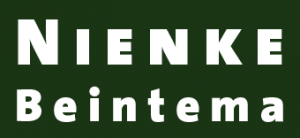The eyeballs are amazing (13 July 2019)
This is a translation from the original Dutch article that can be found here.
How do animals think? People who work with animals on a daily basis really get to know them. This week: the hunter and the moose.
“I have heard rich trophy hunters say: the moose is the ugliest animal in the world. I totally disagree. Bullshit. The moose is one of the most beautiful animals. So confident. So majestic. “
Bryan Jack is standing in the kitchen of his log house in Atlin, a remote village in northwestern Canada. The sinewy man is working at the counter, his sleeves rolled up. In front of him lies a hairy piece of meat the size of a small football. Using his fingernails, Jack is meticulously removing the thin skin and hairs. I take a good look again. I see two huge nostrils, slightly bent downwards. A velvety soft skin in between. A wrinkled upper lip. This thing Jack is working on is a steamed moose nose. A traditional delicacy from the Tlingit, the indigenous group – whom people here no longer call Indians – to which Jack belongs.
“My father and my brothers taught me how to hunt,” he says. “I shot my first moose when I was eighteen years old. But in the years before, I often came along when they were hunting, to learn the tricks.” You have to get to know the land, Jack emphasizes. He who knows the land knows the animals. And he who knows the animals can survive. “It’s an art,” says Jack, who grew up in what he calls a bush camp.
As you spend more time outside, you will start to recognize patterns. You will know the migration paths. You’ll know where to find the mineral rocks that ungulates like to lick. When to expect certain animals in certain places. How you can best approach them. “But I’m still learning,” says Jack. “Hunting is still what I live from. But sometimes I just go outside to be outside. To see the lay of the land.”
In all these years, he grew more and more familiar with how the animals think. “If I follow a moose, I think: where will it go next? I am not blindly following its tracks. No, I’m trying to outsmart it.” Experts, he says, know how to cut corners, so that they can wait for a moose in the next valley. Having walked thousands of miles through the wilderness himself, he can tell from the tracks whether an animal is limping. He knows which sounds to make to lure a bull. How he can judge, by the position of its ears, whether an animal is nervous or relaxed. He knows how to call back a moose that is just about to flee. “You must be in constant contact with the animal,” Jack emphasizes. “You have to talk to it, asking it to be kind to you. Not to attack you. To give itself to you.”
Enthused he talks about the majestic antlers, the big black eyes, the elegant long legs. About the powerful emotion you experience when you manage to approach a moose and look it in the eye. Does he not find it difficult to pull the trigger? “No. This is what I learned in my indigenous upbringing: the country is the spirit. If the spirit gives you a moose, you take it. You can compare it to a blessing from God. Then I thank the animal. Gunalchéesh that you gave your life to me.”
Meanwhile, Jack is still working very patiently on skinning the moose nose, using his bony thumb and index finger like a pair of pincers. “It’s a tricky job,” he notes. “Especially here at the front, around this black
triangle just above the lip. That’s where the skin is really hard to remove.” The rest of the nose is now skinless. A pale-glassy mass, greasy and steaming. With a large knife, Jack cuts the huge thing into cubes: an entire bowl full. Enough for the two dozen guests who will arrive tonight for a traditional feast.
Jack sprinkles salt and pepper on the cubes. “Try one,” he says, presenting the bowl to me. A real honor, I realize. I pick a piece that is not too small, but definitely not too big either, and put it in my mouth. It tastes exactly as it looks. I can’t chew through the cartilage, but try to keep a straight face. Eventually I swallow the cube whole.
“You don’t have to say you like it,” Jack laughs. He wipes his hands and sits down at the table. “We eat every part of the moose.” Grinning, he nuances: “Except for the dung and the bones. We eat the
brain, the organs, the eyeballs. The eyeballs are amazing. We eat the marrow from the toe digits. And we eat the tops of the young antlers. They are still cartilage-like. Very tasty if you roast them over a fire.” Just as tasty as moose nose? “Tastier.”
Jack pauses, stares out the window. “I love the land,” he says emphatically, “with everything that lives in it. It is the core of our existence. That’s why I take it as an insult when someone says moose are ugly. ”
